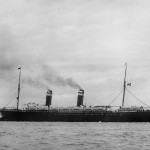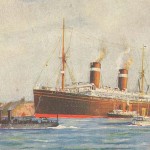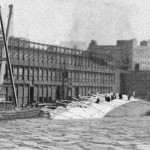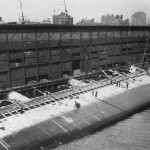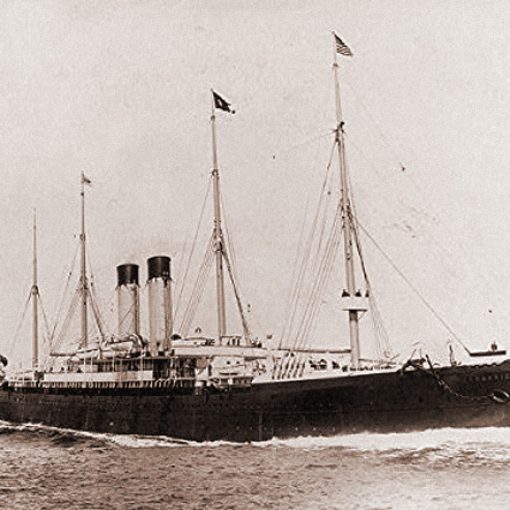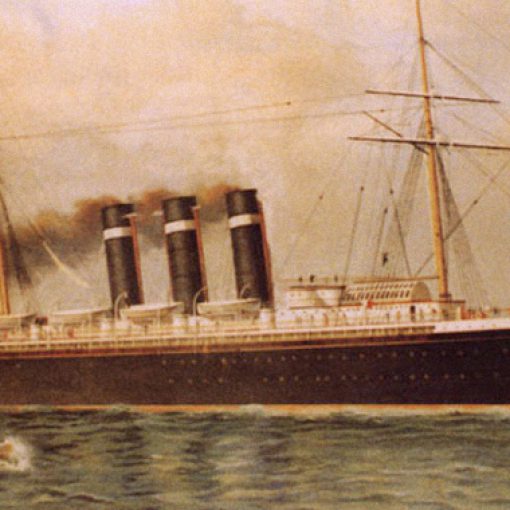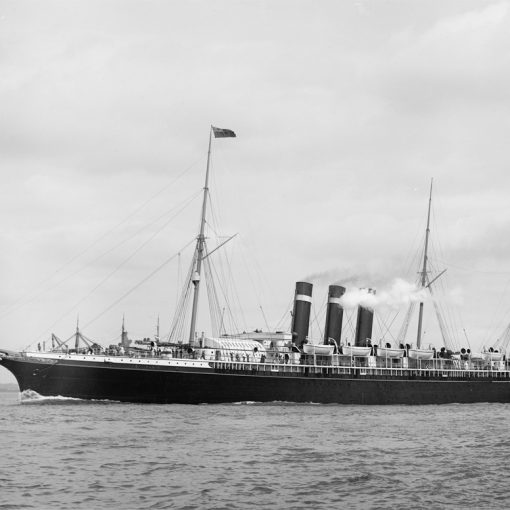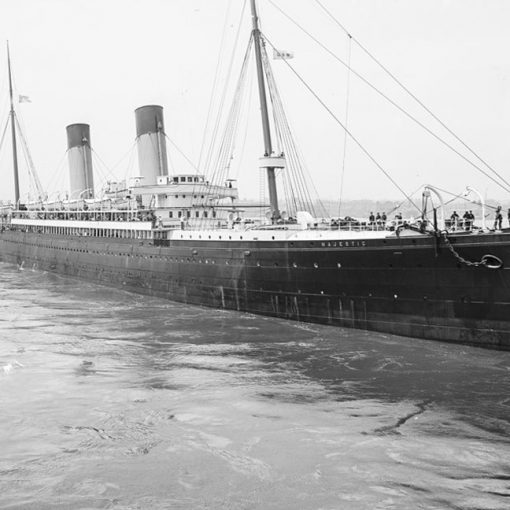1895 – 1923
At the end of the 19th century, the pre-eminent shipping lines were the British Cunard Line and the White Star Line. They operated distinguished liners such as the Campania, Lucania, Teutonic and Majestic – all holders of the coveted Blue Riband. Another shipping company that held a big chunk of the business was the British Inman & International Lines. They operated the two liners City of New York and City of Paris. They had entered service in 1888 respectively 1889 and both held the Blue Riband for some time.
The Inman & International Line was part of a great consortium, called International Navigation Company, created by Clement Acton Griscom. The INC had several distinguished shipping companies under its wings, among others the Red Star Line and the American Line. After some financial difficulties, the City of New York and City of Paris were transferred within the INC to the American Line. However, there was a catch. US law required all ships flying the Stars and Stripes, to have been built by American shipyards. Griscom managed to persuade the government to make an exception in this case. In return, Griscom promised to commission two new liners from an American shipyard.
So in 1893, the two Inman liners were transferred to the American Line, and two years later the first of the two promised newbuilds entered service on the North Atlantic. She was named St. Louis, and became somewhat of a success for the American Line. She was one of the few liners in existence with a gross tonnage above 10,000. The only other ships exceeding that figure were City of New York, City of Paris, Campania, Lucania and of course the Great Eastern, who had been scrapped in 1888.
The second of the class was launched and christened St. Paul on April 9, 1895. From the beginning, she would have been launched already on March 25, but a faulty slipway set a stop to it. The St. Paul was delivered to the American Line on October 4, and went out on her maiden voyage between New York and Southampton on the ninth. Since the owners were not satisfied with the ship’s speed, the St. Paul was sent back to the Cramp Shipyard in Philadelphia where she had been built. During the overhaul, the funnel-tops were also removed. When she went back to service, the American Line’s management were all satisfied with her speed performance.
During the Spanish-American war in 1898, the St. Paul was used as an auxiliary cruiser. Two years later the war had been over for a while, and the St. Paul was racing across the Atlantic on an ordinary November-crossing when she suddenly hit a submerged wreck that completely destroyed her starboard propeller. With the propeller gone, the propeller shaft could turn much faster, and this resulted in the engine revving beyond its capability, and was completely wrecked. The St. Paul had to go for extensive repairs before she could resume service.
The next major refit occurred in 1907, when the liner had new boilers installed and the funnels were lengthened. The following year, on April 25, the St. Paul accidentally collided with the British cruiser Gladiator. Sadly, the British ship sank with the loss of 27 lives. Three years later, the St. Paul was considered an old ship and she was converted to carry only second class passengers and steerage.
When World War I was ignited in 1914, the St. Paul stayed in commercial service, sailing between New York and Liverpool. Not until 1918, was the ship outfitted for war use. The St. Paul was converted into an armed transport of the US Navy. For these military purposes, she was renamed Knoxville. But before being completely fitted out, a very tragic event occurred. While in New York, the vessel capsized between berths, and no one thought it possible to save her. However, it was managed to right the ship and send her for repairs, and in March 1920, the ship was given back her original name and she was put back on the North Atlantic run.
The St. Paul served for another three years, when she was laid up in July. During the lay up, she was sold for scrap, and on October 19, the same year she arrived under the tow of Jacob van Heemskerk at the naval dockyard at Wilhelmshaven, where she would be broken up.
Specifications
- 554 feet (169.3 m) long
- 63 feet (19.2 m) wide
- 11,629 gross tons
- Quadruple expansion engines powering two propellers
- 19 knot service speed
- Passenger capacity of 1,370 people

